
Imagine the AI world as a massive playground. In one corner, we’ve got the heavyweight champs known as “Generative AI vs Predictive AI.” These two are like the Batman and Superman of artificial intelligence, but with totally different capes – or algorithms, in this case!
So, let’s unravel this mystery. Generative AI and Predictive AI might sound fancy, but they’re not sending secret coded messages to aliens. No, no. Generative AI is like an AI artist. It whips up stuff from scratch – think of it as an AI Picasso painting a masterpiece without any human nudges. On the other side of the ring, we have Predictive AI, the fortune teller. This buddy uses historical data to make educated guesses about what’s coming next. It’s like that friend who claims to predict rain just by feeling their knee ache.
While Generative AI is cooking up things you never thought existed, Predictive AI is strangely good at guessing. Generative AI says, “Let’s create a brand-new Pokemon,” while Predictive AI says, “Based on the last 1000 Pokemon, I predict the next one will have either fire, water, or grass powers – take your pick!”
In a nutshell, Generative AI is the Picasso, the dreamer, the “what if” guy, while Predictive AI is the logical planner, the spreadsheet guru, the “I’ve seen this before” detective. Both have their own superpowers and they’re rocking the AI world in their own funky ways! Let’s discuss them in a little bit detail.
Exploring Generative AI
1. What is Generative AI?

Generative AI is that quirky friend who’s a bit of an artist and a bit of a magician. This friend doesn’t have a set of strict instructions to follow; instead, they learn by looking at all sorts of things around them.
Then, when you least expect it, this friend starts creating things out of thin air – it could be a story that makes you laugh or a picture that blows your mind. And get this, they’re not just copying stuff they’ve seen before; they’re putting together all those bits and pieces they’ve learned to make something totally new.
Imagine having a conversation with this friend, and they’re suddenly telling you a story that sounds like it was written by a famous author. Or they show you a picture that looks like it came from a professional artist’s sketchbook. So, Generative AI can talk, paint, compose music, and more, all while bending the rules of what you thought computers could do!
2. How Does Generative AI Work?
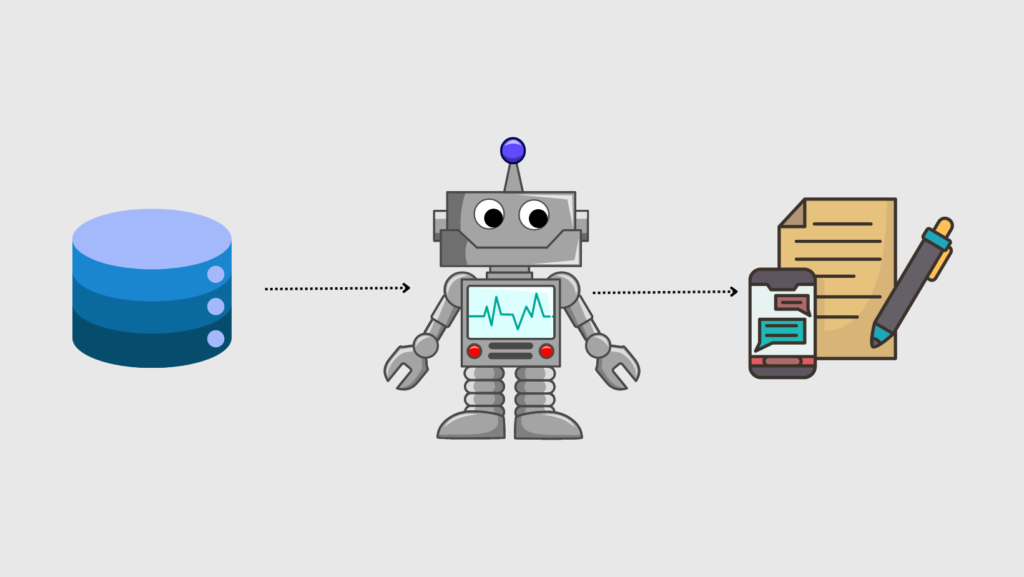
Let’s break down how Generative AI does its thing. First, Generative AI uses something called “neural networks” which are its brain cells. Then, it looks at loads of information (large datasets), like tons of stories, pictures, and music. It’s like giving it a huge pile of Lego bricks to play with.
Now, here’s the clever part: Generative AI figures out the rules in all that information – like which colors go together or which words fit a certain author’s style.
Once it knows these rules really well, it starts making its own stuff. It might write a story that sounds just like your favorite author, even if they’re not the one who wrote it. It can also draw images that will blow your mind.
For instance, consider the incident involving Indian wrestlers in January 2023. In the midst of their protests, a creative experiment emerged using generative AI to manipulate photos. Some images were altered to show the wrestlers smiling, despite the tensions of the protests. The altered images, intended to downplay their genuine concerns, instead fueled more outrage, intensifying the demand for a thorough investigation and justice. Read full article here.
3. How AI Generated Portrait was sold for $432,500?
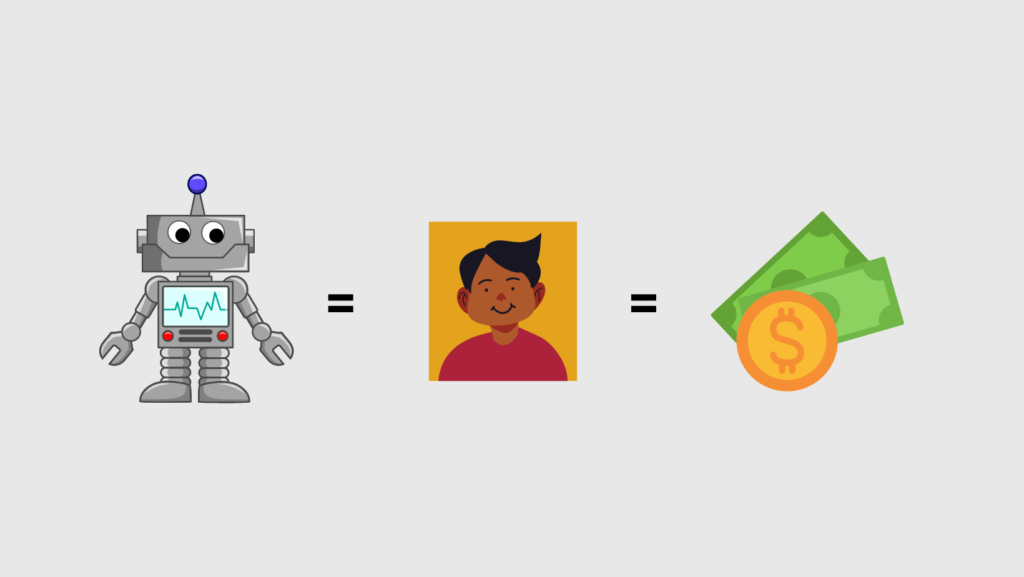
GAN-generated Art in Auctions: In 2018, an AI-generated artwork called “Portrait of Edmond de Belamy” was sold at auction for around $432,000. This artwork was created using a Generative Adversarial Network (GAN) and brought attention to the potential value of AI-generated art. Read full article here.
4. Applications of Generative AI
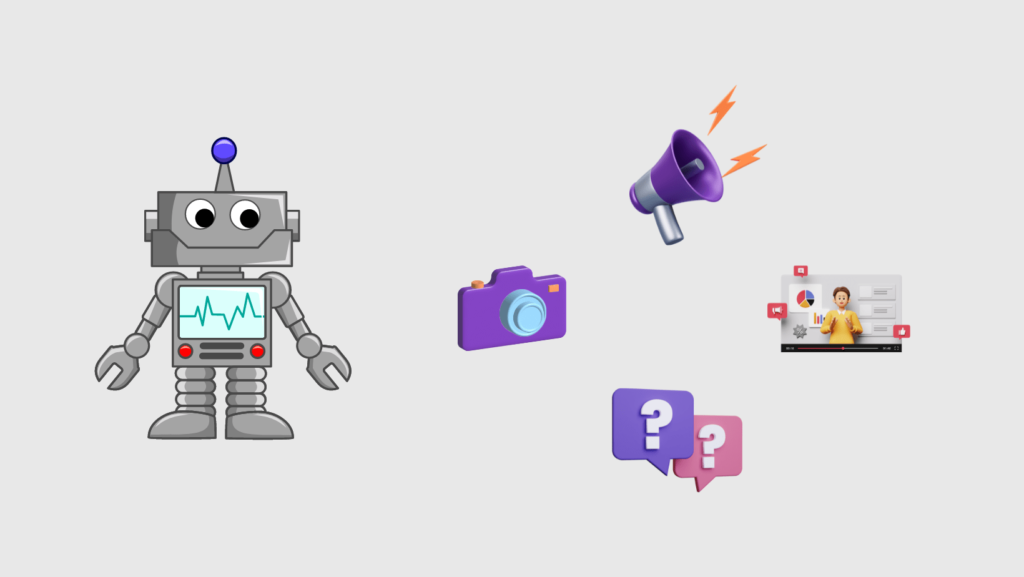
Generative AI is like a creative powerhouse and it finds applications in various creative fields, including:
Content Creation: Imagine an AI buddy who can whip up articles, stories, or even social media posts. That’s what Generative AI does effortlessly.
Art and Design: Generative AI can paint pictures, draw sketches, and design patterns that even an art pro might envy. In fact, it’s a robot Picasso with a palette of endless possibilities.
Music Composition: Ever heard a tune and thought, “Wow, that sounds catchy!”? Well, Generative AI can compose music that’s not just good, but sometimes even mind-bogglingly amazing.
Video Game Design: Picture this: an AI designing levels, characters, and even dialogue for video games. It’s like playing in a world where the game itself is the game designer.
Conversational Agents: Ever chatted with a customer service bot that felt a bit too mechanical? Generative AI can make these bots chat like real humans, answering questions and having actual conversations.
5. Examples of Generative AI
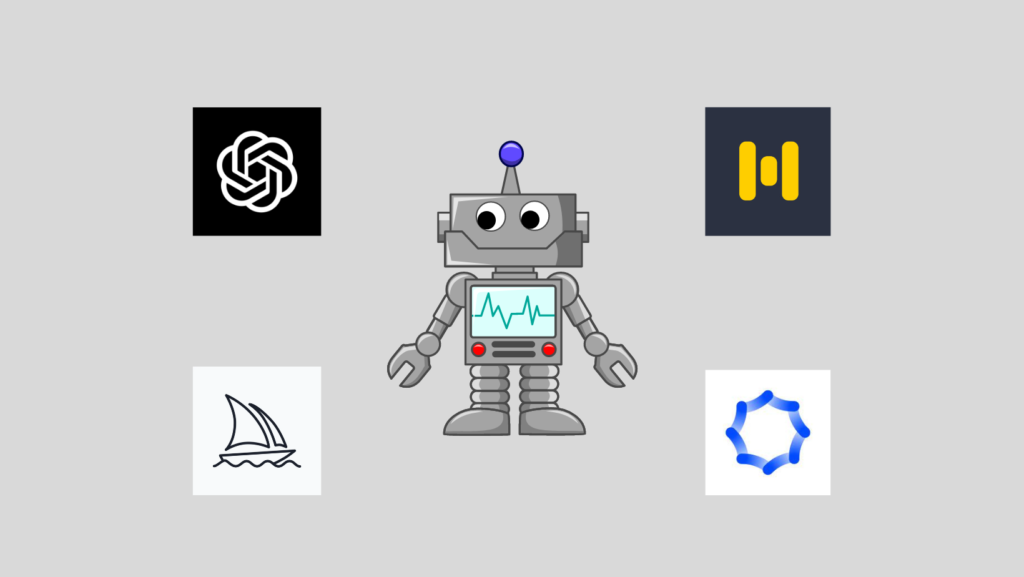
Undetectablecontent AI (for Text): UndetectableContent AI is a free tool helping students, job applicants, and writers avoid AI detectors. It creates human-like, error-free, plagiarism-free content, ensuring your work won’t be wrongly flagged.
Midjourney(for Images): Imagine an AI artist with an infinite canvas. Midjourney can create images from textual descriptions. Just tell it what you want to see, and it’ll paint a picture that matches your description – even if it’s something as wild as “a dragon playing a saxophone on the moon.”
MURF AI (for Sound): MURF AI takes sound to a new level. It can compose music that sounds like it was crafted by a human composer. From soothing melodies to catchy tunes, MURF AI knows how to make your ears happy.
Synthesia (for Videos): Synthesia is your video magician. It can transform scripts into lifelike videos with virtual presenters. You could have historical figures or celebrities talking to you in videos, even if they never actually said those words on camera!
6. Challenges and Limitations of Generative AI
Generative AI still faces challenges in:
Control: Imagine giving a really creative friend the keys to your art studio. Sometimes, Generative AI gets a bit too creative and might produce stuff that’s a bit off-track or even against the rules. So, making sure it creates things that match the ethical and desired standards is like teaching that friend to respect the boundaries of your studio.
Bias: Remember how you can pick up a word or phrase from a friend and start using it without even realizing? Generative AI can do something similar, but with biases. If the data it learns from has any unfairness or prejudice, it might unknowingly create content that’s biased too. So, make sure that friend doesn’t unintentionally spread rumors they heard from someone else.
Quality: Even though Generative AI can be a creative genius, sometimes it can get a bit too random or messy. It can bring top-notch quality content one day but “not so good” stuff the other day.
7. Latest developments in Generative AI
The latest developments in generative AI are tackling two important aspects.
First, researchers are finding ways to train large AI models more efficiently and sustainably.
They want to reduce the environmental impact of these massive models, like GPT-3, while keeping their performance top-notch.
Secondly, there’s a lot of work happening to make generative models, including GANs (Generative Adversarial Networks), more flexible and controllable.
They’re aiming to fine-tune these models so they can be adapted for specific tasks and applications.
So, the latest buzz in generative AI combines efforts to be environmentally responsible with the goal of making these AI systems more versatile and easier to manage.
Exploring Predictive AI
1. What is Predictive AI?
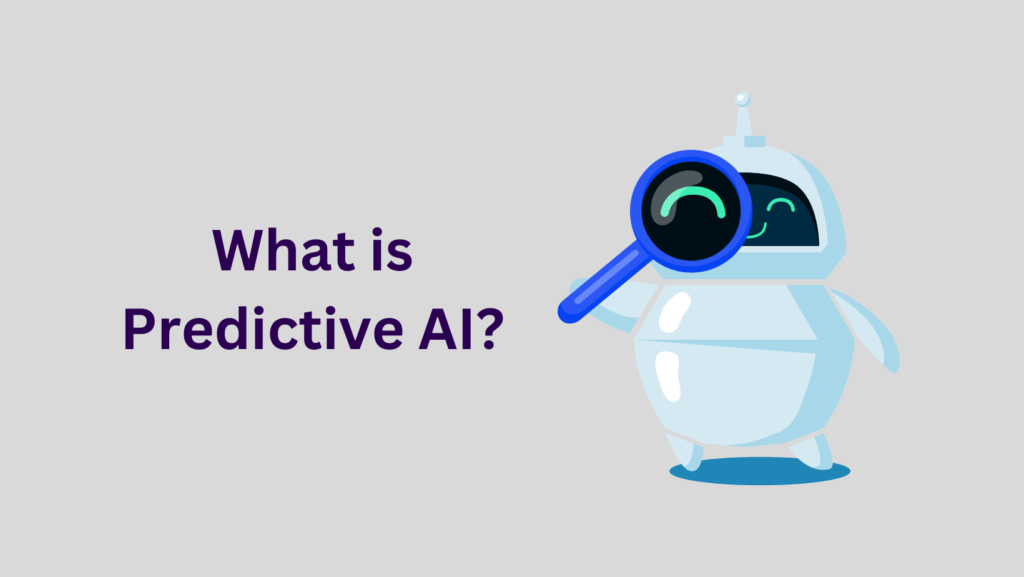
Here’s the deal: Predictive AI takes a look at a bunch of old stuff, like data from the past. It’s like flipping through an album of memories. Then, it starts spotting patterns, like how you always seem to wear a certain shirt on Fridays. With these patterns in hand, it becomes like that friend who can totally predict that you’ll wear that same shirt next Friday too.
This AI magic isn’t just about fashion forecasting. It’s used in all sorts of places, like suggesting movies you might like on streaming platforms, catching sneaky fraudsters, and even helping businesses make smart decisions based on what’s happened before.
But, As AI gets smarter, a danger lurks. People are worried about “killer robots” and AI in the military causing big problems. The prediction that AI could lead to World War III – is a real concern. Imagine if AI-controlled weapons make choices about life and death – it’s a scary thought. In the past, a computer error almost started a nuclear war. This all reminds us that AI mistakes could bring huge trouble.
2. How Does Predictive AI Work?
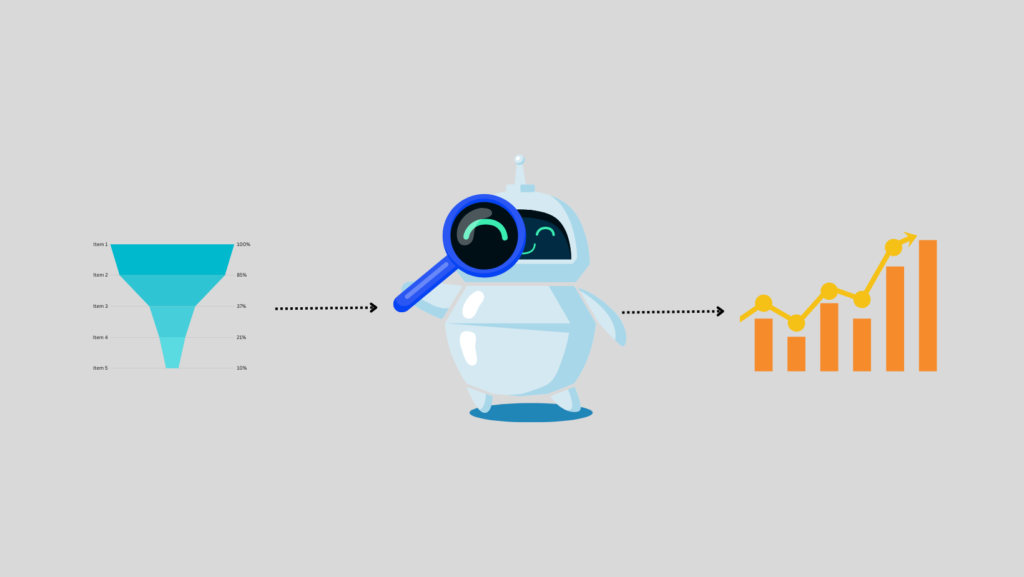
Predictive AI works by employing specialized “statistical algorithms” to dig deep into data and make predictions. It’s a digital detective that’s sifting through piles of information to uncover hidden trends and patterns.
For instance, consider a predictive AI model designed to predict stock prices. ThisAI doesn’t need a crystal ball; it relies on historical stock data instead. It goes through tons of past stock prices, trading volumes, and other related info. Then, using its algorithmic magic, it finds connections between all these numbers. These connections might reveal that every time the moon is full (just kidding!), when certain economic events happen, or even during specific times of the year, stock prices tend to go up or down.
Once the AI has figured out these patterns, it puts on its prediction hat. When new data comes in – say, news about an economic shift or a company’s earnings report – the AI crunches the numbers, looks at its learned patterns, and gives a well-educated guess about where those stock prices might head next.
3. How Predictive AI saved a woman from Leukemia?

IBM’s Watson AI accurately diagnosed a woman’s rare leukemia that had been missed by doctors for months. In just 10 minutes, Watson compared her genetic changes with a vast database of cancer research papers, leading to precise treatment. This demonstrates the potential of AI in medicine to swiftly identify obscure diseases, streamlining the diagnostic process and enabling timely interventions. Read full article here.
4. Applications of Predictive AI
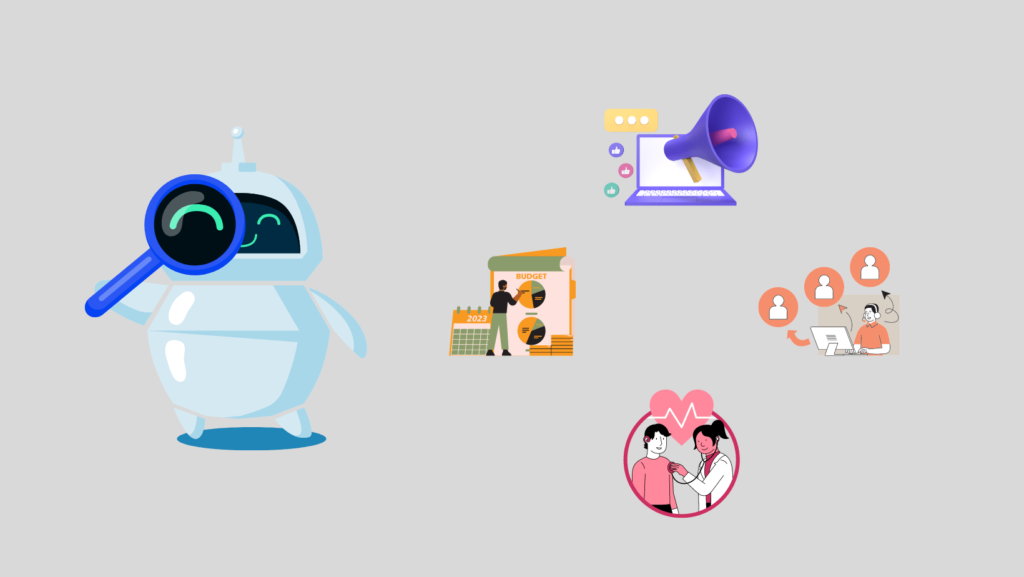
Sales and Marketing Forecasting: Imagine if you could predict the future popularity of a product. That’s where Predictive AI steps in. It looks at past sales data, market trends, and even factors like weather or holidays, to give businesses a sneak peek into what products might fly off the shelves next. Just like knowing the winning horse before the race even starts.
Healthcare Diagnostics: Think about how doctors use their experience to diagnose illnesses. Predictive AI takes a similar approach, but on a grand scale. It analyzes tons of medical data – symptoms, test results, patient histories – to spot patterns that doctors might miss. So, it’s a virtual medical detective that can predict potential health issues based on the data it’s seen.
Customer Behavior Analysis: Ever wondered why you get those “You might also like” suggestions while shopping online? Predictive AI is at play. It studies your past choices, browsing habits, and even the things you linger on, to guess what you might want next.
Financial Market Predictions: The stock market can be a wild ride, right? Predictive AI is like a market analyst on steroids. It delves into historical stock data, economic indicators, and even news sentiments to forecast how the market might swing. It’s like having a financial guru who can predict market trends without needing a crystal ball.
5. Examples of Predictive AI?
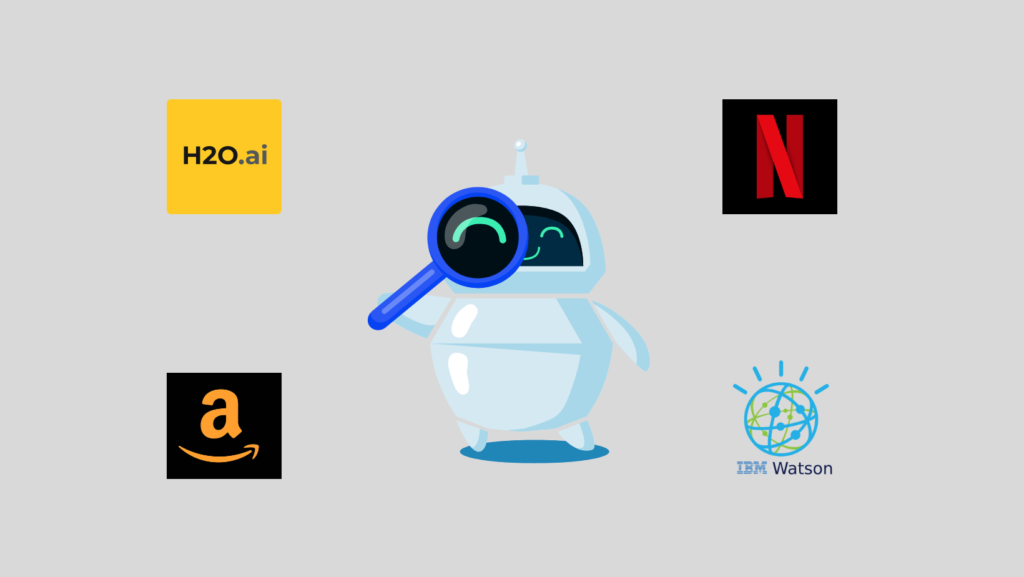
H2O Driverless AI: H2O Driverless AI is like the fortune teller of data. It’s used in industries like finance and healthcare to predict things like credit risk or disease outbreaks. It crunches historical data, learns patterns, and then forecasts future trends, helping businesses make smart decisions.
Amazon: Ever notice how Amazon suggests products you might want to buy? That’s Predictive AI in action. Amazon’s algorithms analyze your past purchases, browsing history, and even what others with similar preferences buy, to predict what you’re likely to buy next and recommend products accordingly.
Netflix: Have you ever been amazed by how Netflix seems to know what shows or movies you’ll love? Predictive AI is behind it. Netflix uses your watching history, ratings, and even the time you spend on certain titles to predict what you’ll enjoy, so it can tailor its recommendations just for you.
IBM Watson: IBM Watson isn’t just answering questions; it’s predicting solutions. In healthcare, it can predict diseases based on medical history and symptoms. In business, it can forecast customer demand or even optimize supply chains, using past data to foresee future needs.
6. Challenges and Limitations of Predictive AI
Data Quality: If the data going into a predictive AI model isn’t accurate or complete – the results won’t be reliable. Garbage in, garbage out, they say. So, ensuring the data going in is top-notch is crucial for getting meaningful predictions out.
Overfitting: Think of this as a model trying too hard to impress its teachers. Sometimes, predictive AI gets so cozy with its training data that it memorizes it rather than truly understanding it. This overfitting makes the AI great at performing on the training data but terrible when facing new, real-world data.
Ethical Concerns: Believe me or not but, AI can unintentionally favor or discriminate against certain groups if the data it’s learned from carries biases. It’s only when you train an AI with old, biased books and expect it to be totally impartial. These biases can lead to unjust outcomes, which raises serious ethical concerns.
7. Latest developments in Predcitive AI
The one latest developments in predictive AI are all about making predictions more accurate, adaptable, and ethical.
They’re using really advanced algorithms like deep learning and reinforcement learning to get better at predicting things in fields like healthcare and finance.
And they’re working hard to make AI systems more transparent and explainable so we can trust them.
The second development is Edge AI.
Edge computing is becoming increasingly important in predictive AI.
Models are being optimized to run on edge devices like smartphones and IoT devices, enabling real-time predictions without relying on cloud-based processing.
Generative AI vs Predictive AI: A Comparative Analysis
While Generative AI focuses on creativity and content generation, Predictive AI centers around making accurate predictions. They cater to different needs and have unique algorithmic structures.
1. Which one to choose?
So, when you’re trying to decide between Generative AI and Predictive AI, it really comes down to what you’re aiming for. If you want to get creative and make things like art or content, Generative AI is your go-to. But if you need to make predictions based on data, that’s where Predictive AI shines.
2. Future Potential & Developments
Looking ahead, both Generative AI and Predictive AI have a lot of exciting possibilities. People are working hard to make Generative AI more controllable and to deal with biases in Predictive AI. There’s still a lot to discover and improve in both areas.
3. Ethical Considerations in AI
As AI becomes more and more a part of our everyday lives, we need to think about some important ethical stuff. Things like biases in AI, keeping our privacy safe, and making sure there’s accountability are all things we should pay attention to.
Conclusion
So, to sum it all up, Generative AI and Predictive AI are like two different superpowers in the world of AI. One is like a creative artist that can make all sorts of cool stuff from scratch, and the other is like a smart fortune teller that can guess what might happen based on past information.
But just like superheroes, these AI powers aren’t perfect. They have their challenges and things we need to be careful about. As we enjoy what they can do, we also need to be responsible and make sure they’re used in a good way.
So, whether you like the creative side or the predicting side, remember that AI is still growing, and we need to use it wisely. It’s like an exciting adventure where we can do amazing things, but we need to be smart and kind while doing them.
So, have fun with AI, but also be a good superhero and use it in a way that helps everyone and makes the world better!

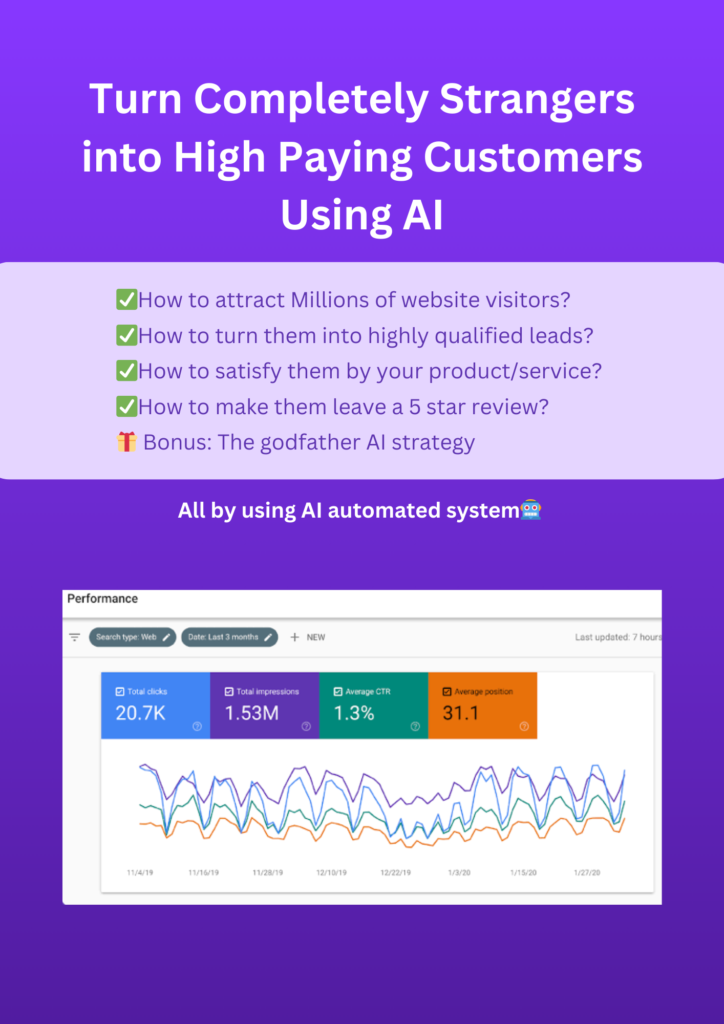
6 thoughts on “Generative AI vs Predictive AI: Knowing the dark secrets”
Your article was a real eye-opener for me. The clarity and precision in your writing are commendable.
Thank You! 🙂
This post is a prime example of your expertise and ability to engage readers. Excellent work!
Thank uh!🥺
Wow Thanks for this blog post i find it hard to acquire awesome important info out there when it comes to this blog posts appreciate for the information site
Wow Thanks for this article i find it hard to come across really good material out there when it comes to this blog posts appreciate for the content website